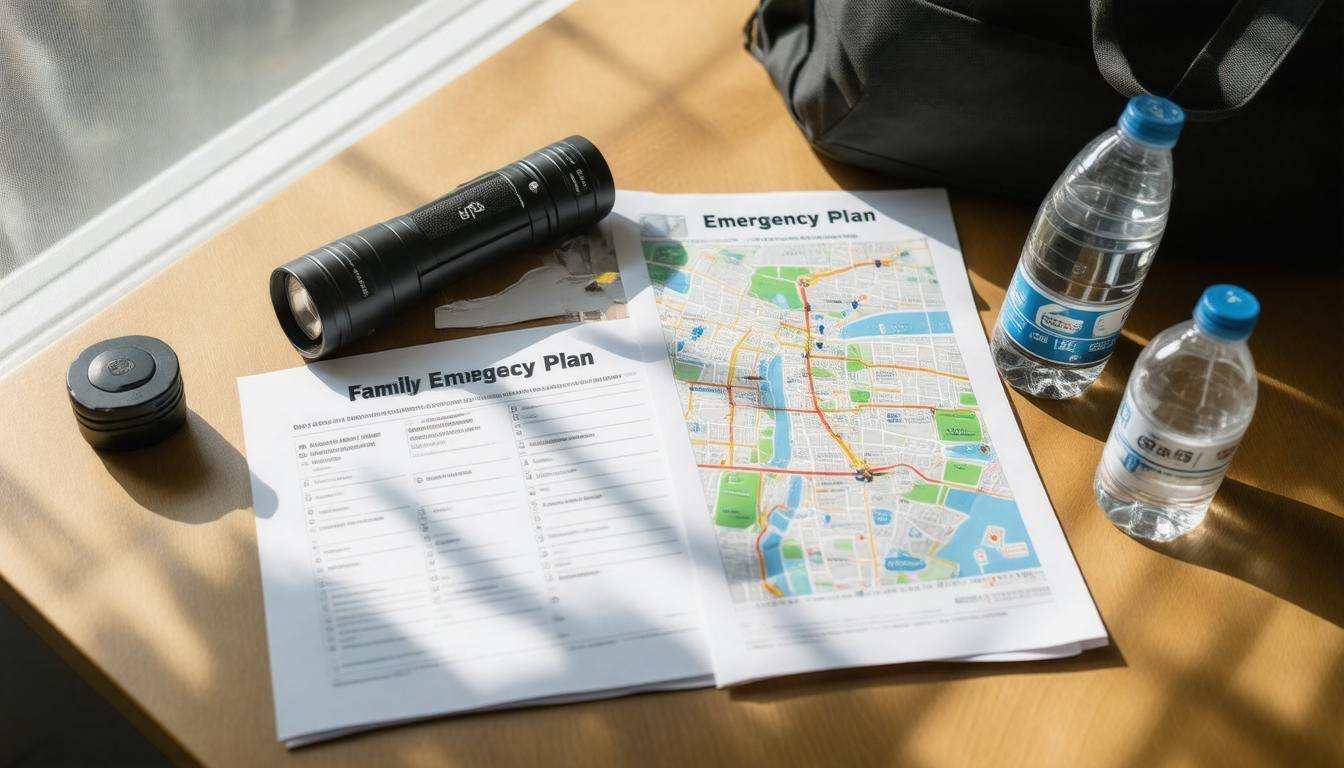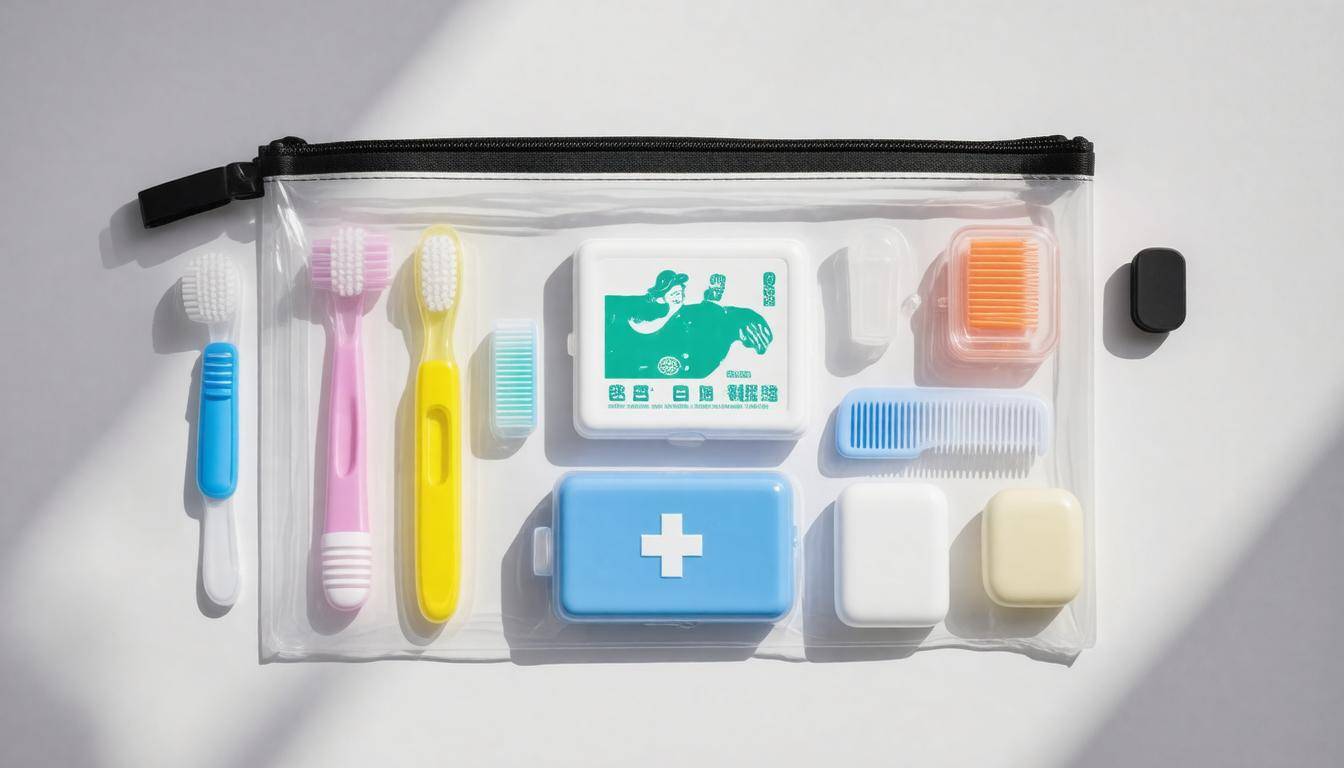Earthquakes can strike at any moment, transforming everyday life in Los Angeles into a scene of chaos. Being prepared isn’t just smart—it’s essential. You may think your chances are slim, but did you know California experiences thousands of earthquakes each year? That’s right! Having an earthquake survival kit can make a big difference when every second counts. In this guide, we’ll walk you through creating a well-rounded survival kit that includes everything from food and water to tools and first aid supplies. Let’s dive into the essentials so you can be ready when the ground shakes beneath you!
An effective earthquake survival kit for Los Angeles should include essential items such as non-perishable food, water (one gallon per person per day), a flashlight with extra batteries, a first aid kit, important documents, and sturdy shoes. Additionally, consider adding a multi-tool, blankets, and any necessary medications to ensure preparedness for potential emergencies.
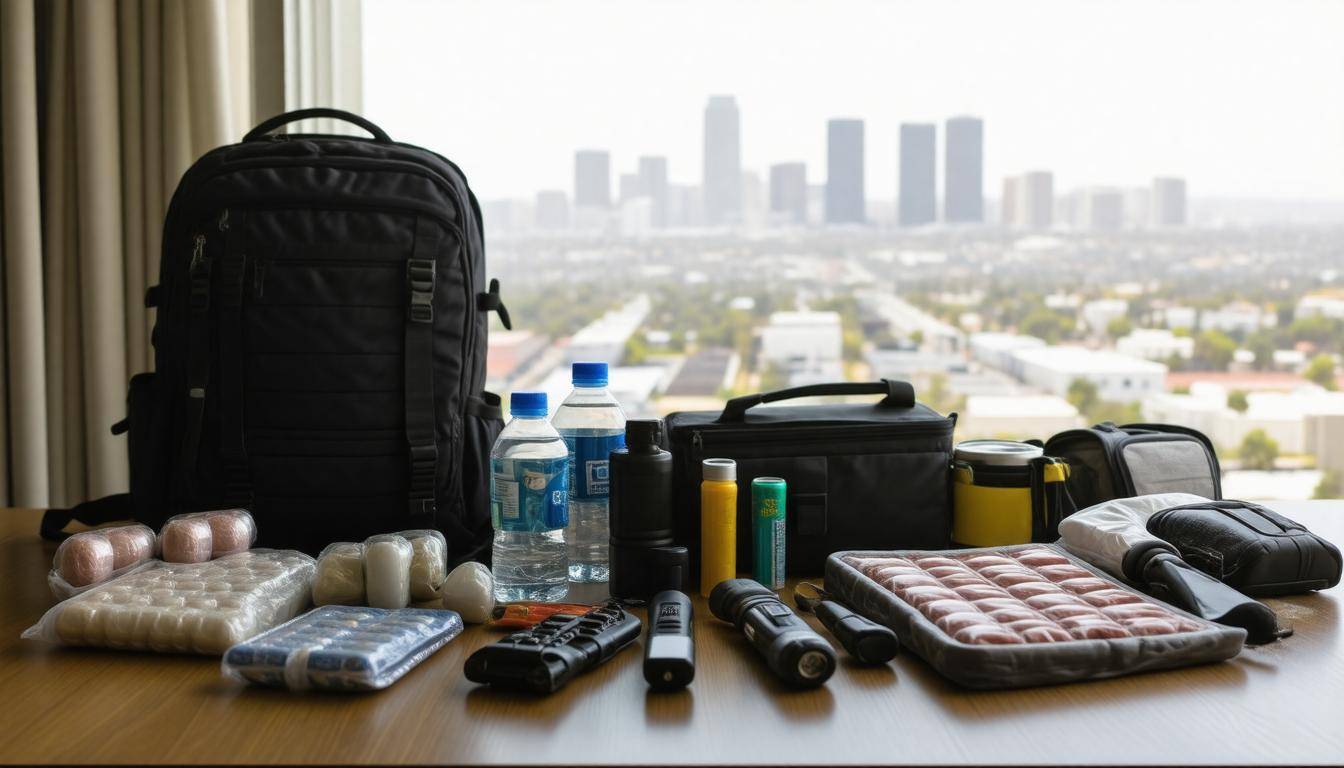
Building the Ultimate Earthquake Survival Kit
An ultimate earthquake survival kit prepares you for at least 72 hours after a disaster. Your kit should not only include basic needs such as food, water, and shelter but also items tailored to the unique challenges of living in Los Angeles. Earthquakes can strike with little warning, and having the right supplies on hand will help you respond effectively when every second counts.
Step-by-Step Guide to Packing Your Kit
Now let’s break down the steps necessary to create a well-equipped survival kit.
Step I – Early Preparation
Start by selecting a sturdy, waterproof backpack or rolling duffel bag. Look for one with multiple compartments for easy access to supplies. A well-organized backpack can make all the difference during an emergency, especially if you need to grab it quickly. Consider options that offer comfort in long-term wear; padded straps and back panels are important features to have.
To avoid adding excessive weight, keep water and food separate. Utilize collapsible water containers which can save space when not filled.
Step II – Organizing Your Items
Use labeled zip-lock bags or small pouches to categorize items effectively. Group similar items together such as first aid supplies, tools, and hygiene products. This strategy prevents unnecessary rummaging during a critical moment and ensures that you can easily retrieve what you need without panic setting in.
Here’s a closer look at crucial supplies to consider:
-
Water: Aim for at least one gallon per person per day for a minimum of three days. Choose portable options like foldable containers or purification tablets as backups.
-
Non-Perishable Food: Pack energy-dense snacks like granola bars, canned foods with pull tabs, and freeze-dried meals that require minimal preparation.
-
First Aid Kit: Include essential medications, bandages, antiseptics, and any personal medications that might be needed.
-
Emergency Tools: A multi-tool can serve numerous purposes and save vital space in your kit. Don’t forget a flashlight with extra batteries — this becomes invaluable during power outages.
-
Blankets and Shelter Supplies: Mylar emergency blankets are lightweight yet effective for retaining body heat, while compact tarps can be used for rain protection or as temporary shelters.
-
Hygiene Products: Having wet wipes, hand sanitizer, garbage bags, and other hygiene essentials can’t be overstated. Cleanliness is crucial even in emergencies.
Assembling these items thoughtfully allows you to survive and maintain some sense of normalcy post-disaster.
Step III – Refreshing Your Kit Regularly
Finally, remember that preparedness isn’t just a one-time task. Schedule regular checks of your kit every six months to ensure all items are up-to-date and functional. Food expiration dates and battery statuses can sneak up on you if unattended.
With your organized and thorough earthquake survival kit customized for Los Angeles’s unique environment, you will be better prepared for any seismic events that may arise.
As we focus on ensuring safety during earthquakes, it’s also vital to consider what specific essentials residents of this region should keep close at hand.
Essential Items for Los Angeles Residents
Living in Los Angeles does mean facing unique challenges beyond just seismic activity, such as wildfires and heavy urban density. This reality emphasizes the need for a well-rounded earthquake survival kit that doesn’t overlook the essentials of sustenance and hydration.
Food Supply
When assembling your survival kit, prioritize non-perishable food items. Think of high-energy snacks like protein bars, dehydrated fruit, or canned goods that can last for a significant period without refrigeration. A good rule of thumb is to have enough food to sustain every member of your household for at least 72 hours, if not longer.
It’s also wise to keep in mind any dietary restrictions or preferences within your family or housemates to ensure everyone has access to the nutrition they need. For example, if someone is gluten-intolerant, adding gluten-free snacks into the mix is crucial.
Water Storage
Equally as important, clean drinking water must occupy a substantial part of your kit. The recommendation is to have at least one gallon per person per day for three days. However, consider environmental factors: living in a hotter climate means you may require even more hydration during emergencies.
It might be beneficial to invest in portable water filtration systems or purification tablets for those uncertain times when you find yourself without a reliable water source. While bottled water is excellent for short-term situations, it is crucial to regularly rotate supplies so that you always have fresh water on hand.
Having ample amounts of both food and water makes a world of difference when stress levels are high post-earthquake. These provisions significantly boost morale while also keeping you physically healthy.
First Aid Kit
Moreover, don’t forget the importance of having a comprehensive first aid kit tucked away in your survival gear. It should include essentials such as band-aids, antiseptic wipes, pain relievers, scissors, and any necessary prescription medications.
When an earthquake hits, injuries may occur not only from the tremors themselves but also from post-quake hazards like debris. Being prepared with medical supplies can make all the difference until professional help arrives.
With these critical elements considered, it’s equally essential to evaluate how well-stocked your provisions are and take steps to ensure they will meet your family’s needs during an emergency. Let’s explore what specific supplies you should have on hand for nourishment and hydration after any unforeseen situation.
Food and Water Supplies
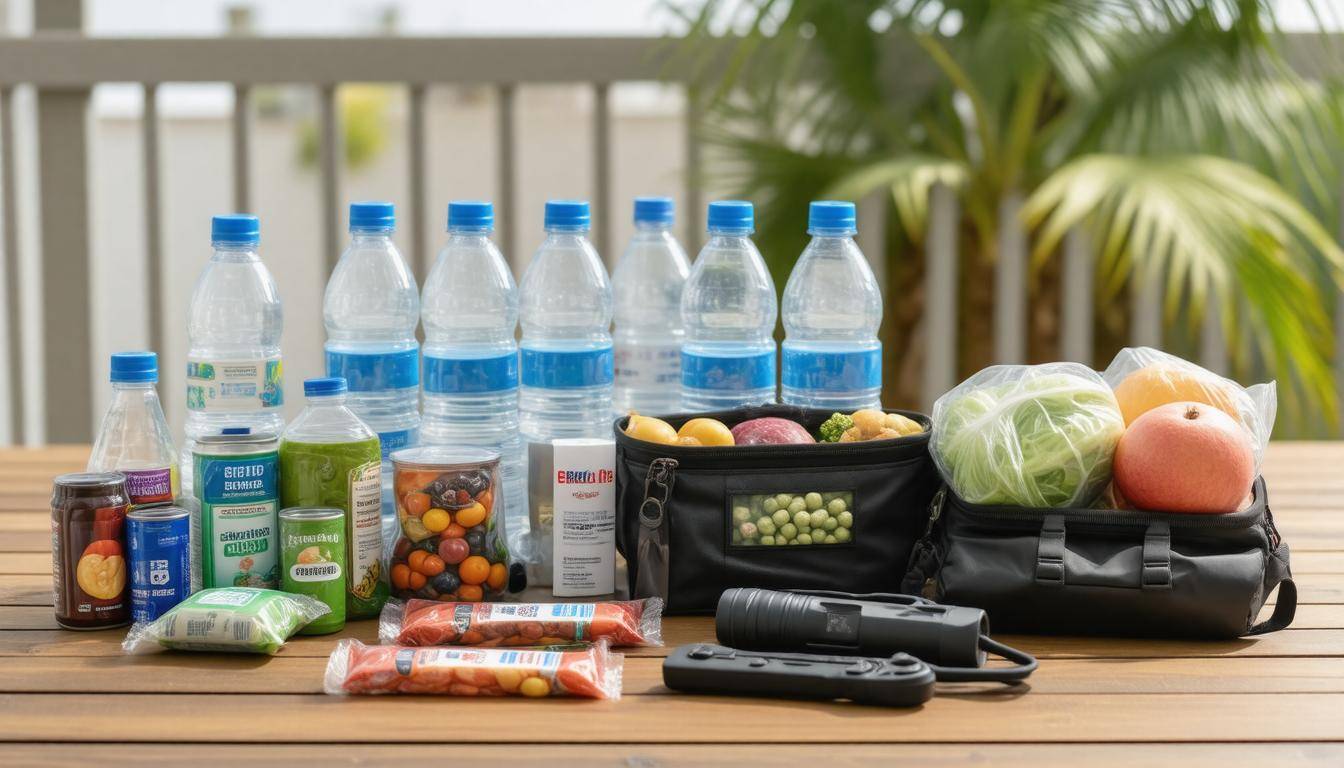
When it comes to disaster preparedness, one of the most pressing discussions revolves around how much food and water you should have on hand. The general consensus among experts, including FEMA, is to store at least one gallon of water per person per day. However, considering doubling this amount can account for additional hydration needs during an emergency situation and for hygiene purposes. After all, in a crisis, you may not just be thirsty; you might also need water for cooking or cleaning wounds.
Non-Perishable Food Items
Choosing the right non-perishable food items is simple yet vital. Opt for high-calorie and nutrient-dense foods that will sustain your energy levels over extended periods. Protein bars, canned meats, and dried fruits are excellent examples because they require no refrigeration and have a long shelf life. Aim for a balanced mix of proteins, carbohydrates, and fats; this diversity will support your body’s nutritional needs during stressful times.
You might consider peanut butter, high in protein while providing healthy fats. Additionally, trail mix combines nuts, seeds, and dried fruits for a quick energy boost. Quinoa is another fantastic choice—this ancient grain is rich in protein and fiber while being versatile enough to prepare quickly with just hot water. Don’t overlook options like canned beans; they are nutritious, filling, and versatile for various meals.
Remember to rotate these supplies regularly. Check expiry dates every few months, replacing any items that are nearing their end to ensure you have fresh supplies when needed.
With a solid foundation of food and water established, the next steps involve evaluating crucial elements related to protection and structural safety during emergencies.
Safety and Shelter Essentials
It’s essential to think about the unexpected situations that may arise after an earthquake. Your survival kit should provide comfort and ensure safety amid the chaos. This involves having the right tools and safety gear to navigate potential obstacles and hazards once the ground stops shaking.
Building Temporary Shelter
Packing a lightweight, compact tent or an emergency bivy sack is a great first step. These options are easy to carry and can be set up quickly in any location, ensuring you have a safe space to retreat to when needed. Space blankets are another indispensable item; their reflective surfaces trap body heat, which is vital if temperatures drop unexpectedly after a quake.
While it might seem trivial, don’t underestimate the comfort element during a stressful time. Ground pads or inflatable sleeping mats can make a world of difference when you’re trying to sleep on uneven terrain, enabling you to relax as much as possible.
When preparing for emergencies, consider not only what you’ll need in terms of survival but also how to maintain your spirit. Comfort can significantly impact your mental well-being amidst crises.
Tools and Emergency Equipment
As you think about safety essentials, the right tools become critical for handling any aftermath situations. Your kit should include at least one sturdy multi-tool or knife. These items can help you open cans for food, repair shelter, or perform minor tasks that require cutting or prying.
Every kit should also contain first aid supplies. Bandages, antiseptic wipes, adhesive tape, and pain relievers are crucial for treating injuries quickly if help is delayed. In case someone has a more severe injury, having a tourniquet handy can be life-saving.
Notably, including something like a portable fire starter or waterproof matches is important too. The ability to create warmth by building a fire could turn out to be crucial for both cooking and comfort.
Lastly, don’t overlook lighting alternatives. Flashlights with extra batteries or solar-powered lanterns should find their way into your kit; darkness can make situations feel more daunting than they already are after an earthquake.
With these essentials in place, you’re better prepared to tackle whatever comes next in an emergency. It’s time to explore the specific tools that will support your efforts in maintaining safety and comfort during challenging times.
Tools and Emergency Equipment
The right tools can truly make all the difference during an earthquake or any other emergency situation. It is not just about having items for survival; it’s also about ensuring that they are both practical and effective. Investing in multi-functional items serves a dual purpose—saving space within your emergency kit while maximizing utility. Picture this: instead of packing multiple tools for different tasks, a well-thought-out multi-tool could eliminate the clutter and allow you to carry more important essentials.
Must-Have Tools
-
Multi-tool (with pliers, knife, screwdriver): This versatile tool should be your first line of defense. Whether you’re opening cans or making simple repairs, having everything in one convenient device can save precious time.
-
Portable solar charger: When a disaster strikes, maintaining power is crucial, especially for communication devices. A solar charger ensures you can keep your phones charged and stay connected with emergency services or loved ones.
-
Waterproof matches or lighter: Reliable fire-starting equipment will not only keep you warm but is essential for cooking food and boiling water—key aspects of survival when resources might run low.
-
Heavy-duty gloves: The last thing you want is to injure yourself when trying to clear debris or manage potentially sharp materials. Heavy-duty gloves protect your hands while allowing you to work effectively.
-
Crowbar for removing debris: In case of structural damage, an effective crowbar can assist you in clearing pathways. It combines strength with utility—helping you access areas otherwise blocked off.
-
LED flashlight with extra batteries: Visibility becomes crucial in emergencies! An LED flashlight uses less energy than traditional bulbs while providing bright light. Always store extra batteries so you are prepared when the power goes out.
Having these tools at your disposal prepares you better for challenges that may arise after an earthquake. Nevertheless, understanding how to communicate effectively and having medical supplies at hand are vital for addressing injuries and coordinating with others.
Communication and First Aid Supplies
In the chaos of an earthquake, you’ll want to ensure that you can connect with loved ones and emergency services while also being equipped to handle potential injuries. Communication is vital. Create a strategy for staying in touch since phone lines may become overloaded or damaged. One effective tool is a battery-operated or hand-crank emergency radio; it serves as a reliable source of information when power is out.
Additionally, consider investing in two-way radios for direct communication with family members or neighbors, providing peace of mind if mobile networks fail.
First Aid Kit Essentials
A well-stocked first aid kit is your lifeline during emergencies. Take the time to assemble a first aid kit that meets your household’s specific needs. Essential items include trauma supplies like bandages and gauze, which are fundamental for treating wounds. Antiseptic wipes are indispensable for cleaning cuts to prevent infection. Make sure your kit contains pain relievers such as ibuprofen or acetaminophen, along with any prescription medications needed by family members.
Alongside these basics, tools like a thermometer and tweezers can be crucial. The thermometer helps track changes in health, while tweezers can assist in removing splinters or debris from cuts. It’s also wise to include an emergency first aid manual, which can guide you through essential procedures if you’re unsure about how to address certain injuries.
Remember, reviewing your first aid kit regularly is just as important as putting it together initially. Check expiration dates on medications and other supplies, replacing items as necessary to ensure everything is ready when you need it most.
Having established effective communication strategies and essential first aid supplies, the next step involves organizing these critical resources in a manner that maximizes their accessibility and practicality during an emergency.
Proper Storage of Your Kit
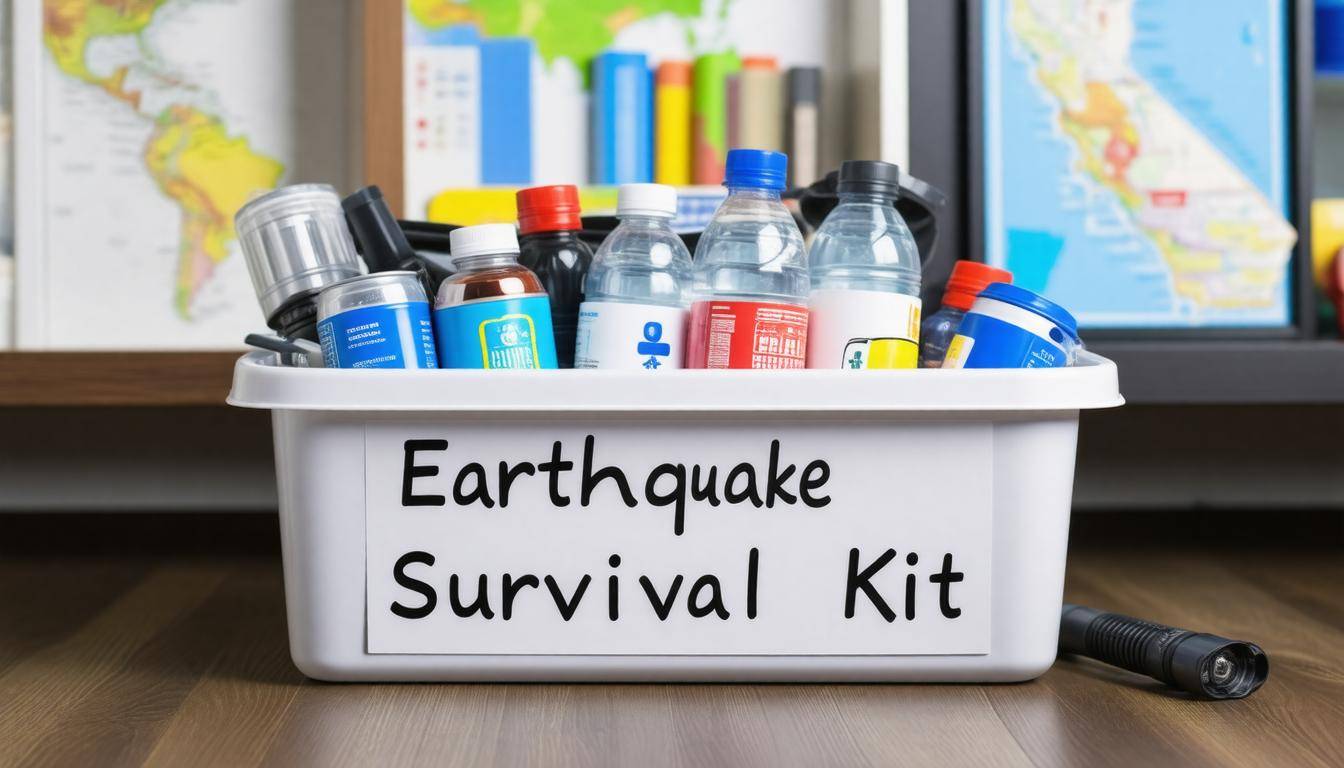
When it comes to emergency preparedness, the way you store your earthquake survival kit can significantly impact its effectiveness. Proper storage ensures that all the vital supplies you’ve assembled are preserved and accessible precisely when you need them. Think of it like storing fine wine: if not kept in optimal conditions, your prized collection may spoil. Similarly, if your kit is not stored correctly, the contents could become ineffective or unusable.
Tips for Effective Storage
First and foremost, choose a spot for your kit that’s cool and dry. Basements may seem like a good choice due to their spaciousness, but moisture can be detrimental. Instead, opt for a closet or cupboard that is sheltered from humidity—ideally located close to exits for quick retrieval during an emergency evacuation. It’s also wise to keep a smaller version of your kit in your car or workplace, ensuring preparedness no matter where you are.
Regular checks are key! Think of these checks as scheduled maintenance for a vital piece of equipment.
Pay attention to expiration dates on non-perishable items such as food and water. Ideally, take time every six months to inspect your kit: refreshing water supplies, replacing expired medications, and checking the functionality of flashlights or batteries. This proactive approach not only provides peace of mind but also keeps you and your family ready for any situation that arises.
I once found that my work car kit contained expired rations after a few years without inspection. Imagine the disappointment of needing supplies in an emergency only to discover stale granola bars!
To make this process easier, consider creating a simple checklist specifically for your kit’s inventory. Having a visual reference can motivate you to stay organized; include categories like food, water, medical supplies, and tools. Use bold markings for items approaching their expiration date so they catch your eye immediately.
Quick Tips for Long-lasting Storage
- Keep kits off the ground and on shelves to protect against potential flooding.
- Use airtight containers for perishables to enhance longevity.
- Clearly label all kits with both their content descriptions and the date of the last review.
By adopting these storage techniques, you can significantly enhance your earthquake preparedness strategy and ensure that your survival kit is truly ready for action whenever a tremor strikes.
As you focus on obtaining the right supplies, it’s crucial to keep refining your strategy for ongoing readiness in high-risk areas where seismic activity is a constant concern.
Ongoing Preparation Tips for Earthquake-prone Areas
One of the most effective ways to stay prepared is by participating in local earthquake drills. These drills are invaluable because they simulate real-life scenarios, helping you practice what to do when the ground starts shaking. Engaging in these drills not only reinforces safety procedures but also fosters a sense of community as neighbors learn about emergency protocols together. Remember, familiarity breeds confidence.
In addition to drills, it’s crucial to stay informed through community alert systems like ShakeAlertLA. This system provides real-time notifications about seismic activity in the area, which can be essential for making quick decisions during an earthquake. The earlier you receive alerts about tremors, the better prepared you’ll be to navigate the situation safely.
Staying informed should go hand-in-hand with evaluating your own emergency supplies regularly.
Reviewing and updating your earthquake kit is another important aspect of ongoing preparedness. As your family grows or as your individual needs change, some items may no longer be relevant while others become essential. For instance, if you have a new baby or adopt a pet, you’ll need to ensure your supplies meet their needs as well. It’s not just about having an assortment of items; it’s about having the right items readily accessible for anyone who might require them.
Checking expiration dates on food and medicine within your kit ensures you’re not left at a disadvantage when you need these supplies most.
By investing time in these ongoing efforts—attending drills, utilizing alert systems, and frequently assessing your emergency supplies—you’ll enhance your ability to respond effectively during an earthquake and instill a sense of calm during potential chaos. A proactive approach builds confidence that if disaster strikes, you’re ready to face it head-on.
Taking these steps ultimately transforms preparedness from a burden into a shared mission, empowering you and your community to safeguard against the inevitable tremors ahead.
What essential items should be included in an earthquake survival kit for residents of Los Angeles?
An earthquake survival kit for residents of Los Angeles should include essential items such as water (one gallon per person per day for at least three days), non-perishable food (a three-day supply), a flashlight, batteries, a first aid kit, a whistle to signal for help, dust masks, and multi-tools. According to the U.S. Geological Survey, California experiences thousands of earthquakes each year, making preparedness crucial—having these supplies ready can significantly increase your chances of survival and comfort in the aftermath of a tremor.
How often should I check or update my earthquake survival kit?
It is recommended to check and update your earthquake survival kit at least twice a year, ideally during daylight saving time changes in spring and fall. This ensures that any expired supplies are replaced, and you can assess the adequacy of your kit based on changing family needs or new recommendations. According to the Federal Emergency Management Agency (FEMA), being prepared can significantly increase your chances of survival and recovery; only 20% of California residents have a disaster supply kit, indicating a strong need for regular updates to ensure readiness.
How can I help my community prepare for earthquakes and encourage others to create their own survival kits?
To help your community prepare for earthquakes, organize awareness workshops that educate people on the risks and importance of preparedness. Share statistics like the fact that over 20,000 earthquakes occur in California each year, reminding them that being prepared can save lives. Encourage group activities to create survival kits together, fostering teamwork and accountability; consider starting a community challenge where members can showcase their kits online. By emphasizing a collective effort to plan, you not only empower individuals but also strengthen community bonds in the face of potential disasters.
What steps can I take to ensure my home is safe in case of an earthquake beyond having a survival kit?
To ensure your home is safe in case of an earthquake, consider retrofitting your house by bolting it to its foundation and securing heavy furniture to walls to prevent tipping. According to the Federal Emergency Management Agency (FEMA), proper retrofitting can significantly reduce damage, with studies showing that up to 90% of earthquake-related injuries occur from falling objects and poor structural integrity. Additionally, regularly inspecting gas lines and having a professional assess your home’s seismic resilience can further safeguard against disaster.
Are there specific recommendations for families with pets regarding their earthquake preparedness kits?
Yes, families with pets should include specific items in their earthquake preparedness kits. Essential supplies include enough food and water for at least three days, a leash, carriers for safe transport, and any necessary medications. According to the American Kennel Club, around 44% of households in the U.S. own dogs, highlighting the importance of considering pets in disaster plans. Additionally, having a pet emergency kit ensures that families can evacuate smoothly while keeping their furry companions safe during unpredictable situations like earthquakes.
